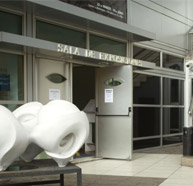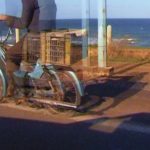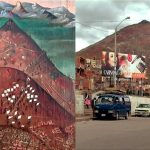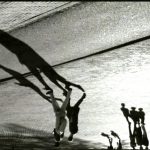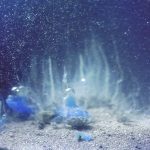-
Constellations
A curatorial essay based on the FRAC collections.
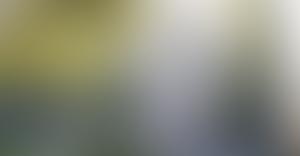
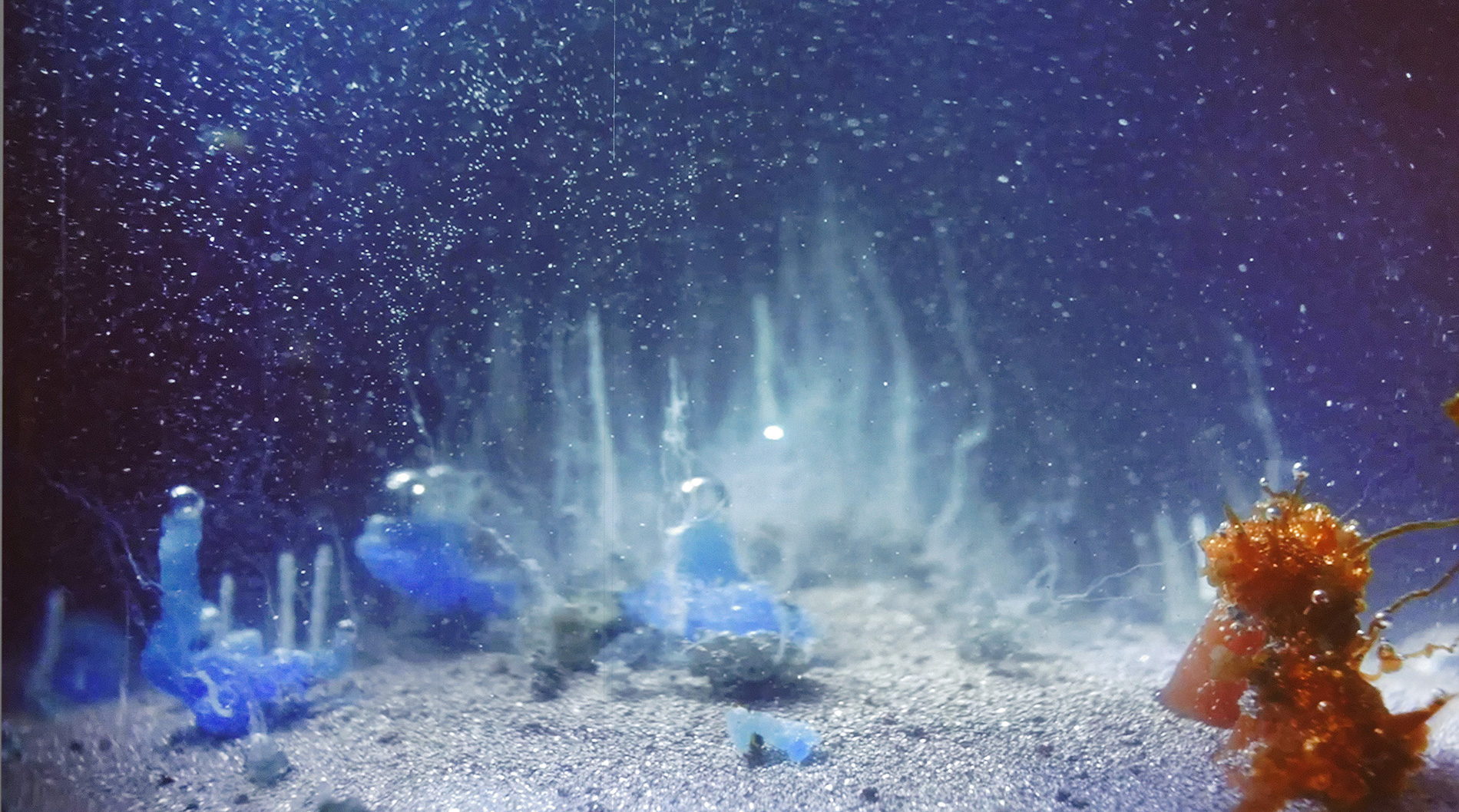
-
Constellations
A curatorial essay based on the FRAC collections.

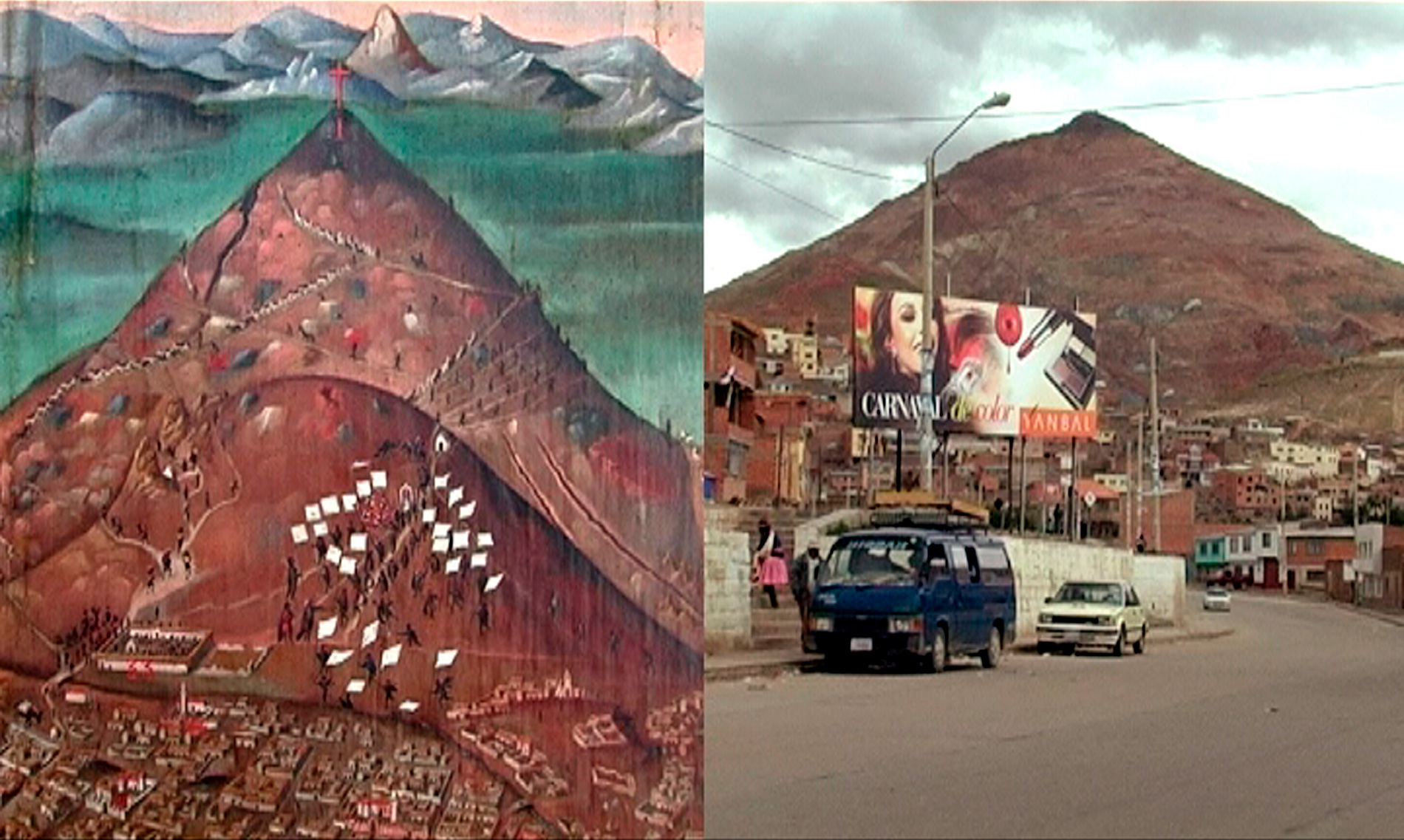
-
Curatorial Text
Constellations
A curatorial essay based on the FRAC collections.
“We see only what we know” (Ernst Gombrich). “It is seeing which establishes our place in the surrounding world” (John Berger). Based on these and other premises linked to the cultural dimension of visuality, this exhibition tests a series of thematic axes that are arranged, in the form of micro-narratives, in an attempt to review the different approaches that artists, gathered in the FRAC collections, carried out through their works, contributing to the configuration of diverse aspects of contemporaneity.
Several conceptual nuclei, in the form of constellations, contrast works of artists of diverse origins. They are openly offered to the public. Ways of seeing, Transits and migrations, On nature and Gender issues are the main axes transversally crossed in turn by other problems such as identities, social tensions, environmental issues… In this way, the exhibition brings together rich as much as varied perspectives.
Additionally, the reflection on the resources with which the artists present and represent diverse realities completes and enriches our approach to the variety of aesthetic proposals that invite us to a critical reflection on the present.
In this line of work, the videos specifically selected for this exhibition at MUNTREF provide a series of readings in which layers of meanings are superimposed, linking the abovementioned thematic axes.
It is difficult to choose one to begin the story, since it is possible to start it from any of them. However, I believe that the work of the German Harun Farocki, as primus inter pares, is an excellent alibi to critically think about images from a video installation like the one he composed in The Silver and the Cross in 2010.
Farocki has stood out not only for developing what is known as the “new German cinema” between the sixties and eighties -in parallel and in dialogue with the new French cinema- but he also began his work of “image criticism” as an essayist at an early age. In a recently published book, in which several of his essays were selected under the title Mistrusting Images, observations such as the following can be found: “When the earthquake in Haiti occurred, German public television showed the image of a naked sixteen-year-old girl. That would not have happened if the girl had not been black”.
Why, in what way and how does the production of images participate in the destruction of human beings? Is it, maybe, a critical montage denouncing the violence inscribed in the “images of the world?” What is the media phenomenon whereby the viewer can no longer distinguish a real image from one that is not? How does an audiovisual story of civilization affect a social corpus embedded in war, politics and economics?
These issues lie at the base of his “mistrust” and it is this mistrust that leads Farocki to appropriate images from a variety of sources; from graphic media and advertising to film, documentary, newsreels. All of them enter his work in an assembly process in which the images reinstate another meaning.
The work presented here is precisely an excellent example of what we have been saying. In it, Farocki re-read images of the American colonial past, juxtaposing them with current images of the same territories to reconfigure in this way, from a political reading, a historical narrative in which the exploitation and plundering suffered by the American peoples are revealed as the prolongation in time of such processes in the framework of past and present capitalism.
If Farocki allows us to enter into a critique of the image by placing it under suspicion and thus inviting us to other readings, the works of Ecuadorian Estefanía Peñafiel and Indonesian Fiona Tan also venture into a recovery of images and stories through the encounter of photographs from varied times -more intimate, personal, family stories- which, however, do not cease to be traversed by the political dimension.
In Fiona Tan’s work, the role of images to help us think about memory, time and history is the key to her work. Something that we also see in the work of Peñafiel who seeks to unravel the fragility of images in their capacity to appear and vanish, such as memory itself which is defined by what it manages to preserve in the midst of oblivion. Tan and Peñafiel recover space from the intimacy of the fragments of stories housed in the images.
The gender issue is present in the exhibition through the emblematic work of North American feminist Martha Rosler, Semiotcs of the Kitchen, which paradoxically dialogues with the video installation by the Lebanese Ymane Fakhir and her Pain de sucre. There, questions such as “What does it mean to be a woman?” and “What are the practices and images that are socially associated with her?” seek to be answered through the feminist and feminine look.
On the other hand, the question of territory as a space of power, appropriation, and battlefield, as well as a location in which to seek “a place in the world,” is not only present in Farocki’s work but is also part of several of the videos included in this exhibition.
The ways in which a space is traveled point to the ways in which the subjects manage to appropriate it, either to confirm the pre-established structures or to propose other alternatives.
Thus, the work of the DEMOCRACIA Group confronts the audience by initially offering a show linked to the actions of groups of young people in the urban space; they particularly focus on a group of boys doing parkour. Yet, a little after observing their physical skills and their ability to continue on the path, simply overcoming the obstacles -or not so- with their jumps and pirouettes, we realize that they are doing it in a highly sacralized place in our societies, such as cemeteries. In this case, it is the civil cemetery of Madrid, founded at the end of the 19th-century to house those who did not wish to rest in a Catholic cemetery. Figures in the world of politics, thought and the arts are buried there, whose common denominator has been to hold utopian ideas and who shared democratic, socialist and republican principles. The juxtaposition of the traceurs, who trace totally particular routes in which there is no interest in history or in previous layouts, with the presence of the tombs and their varied historical-political connotations, not only make this video a reference to possible alternative trades in the territory, but, and very especially, it is about the presentation of the ways in which the utopias of revolutions that remained pending or did not reach their goals coexist in the present. Utopias silenced by the lack of interest in those pasts. Once again, the clash of images contributes to constructing a critical view on our present and the relationship we maintain with history.
Ways of traversing space appear problematized by the images of French-Algerian artist Zineb Sedira too; she invites us to tour a rural-urban route from the point of view of a car window: an allusion to the transits and migrations that take place every day around the Mediterranean between North Africa and southern Europe.
On the other hand, Bouchra Khalili, a Moroccan artist, carries out an arduous task in which she gathers the individual memory of the experience of migration in an oral story that becomes visible in the tracing th made with a marker on a map, showing much of Africa, the Arabian Peninsula and Europe. Her work is presented as a way of giving a voice to those who usually do not have one: those thousands of migrants who do not always reach the desired port and die in the attempt to cross a hostile and uncertain territory.
Meanwhile, French director Annabelle Amoros, chooses to film a Sur la route (On the road) tour with minimum resources and a particular attention to the quality of image and sound. Centered in Calais, the film seeks to reveal the forms of control with which this frontier city lives its daily life almost without noticing them. This omnipresence, however, divides the city, the neighborhoods, the people, and everything that happens there.
Kapwani Kiwanga, a Canadian artist with roots in Tanzania, chooses to focus her camera on a minimal, almost absurd fact, by placing a woman -actually herself- who, stationed at the side of a road, tirelessly tries to restore the green of the leaves of a plant that is covered by red soil that flies on the vehicles that eventually pass by. The video reveals, from a simple and effective aestheticism, all those daily, routine and apparently useless actions that, nevertheless, we never stop performing. Kapwani’s gaze seeks to get closer to the ways in which landscapes define themselves and, at the same time, define identities: what they represent for people, to what an extent they express situations of belonging, and so on. And of course, collaterally, she is also interested in scrutinizing the ways in which the landscape intervenes in the artistic production.
Finally, the work of Frenchman Jean-Christophe Norman appears from the insistence and performative repetition of his writing in the streets of different cities with his Constellation Walks, which points out other possible routes, some other readings, some other encounters between image and word, between literature and urban spatiality.
Thus, if Farocki was our starting point, both, for the way of “mistrusting” images and through that attitude carrying out a process of selection, reselection and assemblies that bring new looks and along with them the emergence of a critical sense, in this particular work presented, -on the history and modes of domination and the ways in which religion and economic policy “meet”- the rest of the chosen authors contribute, each one from their own perspective, to alternative critical forms on the image or on the way of approaching reality. They do it while presenting a set of possible ways of traversing territories in which a politics of images becomes present, on the one hand, and socio-anthropological and political reading, on the other. However (and here is the richness of these works!), this is just one of the various routes and possible readings offered in this exhibition, in which it seeks to challenge the viewer to think with images in order to make this art space into a space for the development of thought.
Diana B. Wechsler
Artistic Director MUNTREF
-
Rector’s Text
Founded in 2002, MUNTREF is a project of social and political extension of UNTREF from an artistic and cultural perspective. As such, it resonates at every moment with the issues that define it, such as the gender issue today, with the purpose of affirmatively contributing to the process of accelerating equality.
For this reason, once again we start the year by dedicating ourselves to showcasing the work of female artists who have not yet had a monographic exhibition in our country. We did so with the Brazilian Anna Bella Geiger (2018), the French-Moroccan Leila Alaoui (2018), the Polish Angelika Markul (2018), the Peruvian Claudia Coca (2018), the Argentine Marina De Caro (2018), the Argentine-Brazilian Carla Zaccagnini (2019), and the American Martha Rosler (2019), for example.
We also devote our efforts to focus on the work of artists to whom an exhibition had not been dedicated, or who had been absent from the scene for many years, as was the case of the anthological exhibitions of Gertrudis Chale (2007), Marcia Schwarz (2008), Raquel Forner (2013), Graciela Sacco (2014 and tribute in 2018), and Annemarie Heinrich (2014). All of them were the result of long research and management projects.
On the other hand, the research and production of group exhibitions, such as Migrations (in) contemporary art (2015), among others, led us to reinforce this path by presenting mostly female artists works.
Today, in 2020, we choose to continue this tradition by presenting at MUNTREF Visual Arts Museum, Constellations, a selection of works from the FRAC collections. A project organized around a series of micro-narratives linked to contemporary aesthetics and problems, integrated, among others, by works by Estefanía Peñafiel, Ymane Fakir and Kapwani Kiwanga, among others. Meanwhile, at the MUNTREF Center of Art and Nature, we present works by Bruna Esposito, an Italian artist whose work is centered on the four elements; in addition, at the MUNTREF Center of Contemporary Art, the rooms are occupied by the Italian conceptual artist, forerunner of relational art Maria Lai, the outstanding Chilean photographer Julia Toro, and the high-impact Tucuman artist Carlota Beltrame. In all cases—and in keeping up our motto “art for all”—this is the first time that an exhibition dedicated to each of them is being presented to the varied public of Buenos Aires.
I wish to thank the joint effort carried out with the MAXXI-Museo Nazionale delle Arti del XXI Secolo of Rome and the support of the Italian Council, as well as that of the Italian Embassy in Argentina. I am also grateful for the collaboration of the FRAC, the French Institute and the French Embassy in Argentina and the cooperation of Tucumán Province’s House in Buenos Aires. Finally, I wish to acknowledge the enormous work of the MUNTREF team led by Dr. Diana Wechsler, art director of MUNTREF and BIENALSUR, which enables these ambitious projects to be carried out. This sum of efforts allows us to enjoy the experience that these wonderful artists propose to us.
Aníbal Y. Jozami
Rector UNTREF
General Director MUNTREF
-
Institutional Text FRAC
The FRACs, Regional Funds for Contemporary Art, were created in 1982 in France during a political movement focused on the process of creating French regions and decentralizing power based on a partnership between the State and the regions.
The mission of these institutions, which are almost forty years old, is to acquire recent contemporary artworks, to exhibit them in the most varied places in the French regions and to develop forms of public awareness of current creation.
Today, twenty-three FRACs collections bring together more than 35,000 works by 6,000 French and foreign artists. With their light and autonomous structures, attentive to prospective and experimental approaches, the FRACs ensure a mission of support for young artists and are generally the first institutions to acquire their works.
The 35,000 works acquired by the twenty-three FRACs are brought together, from an ambitious and selective approach, to the most innovative artistic proposals, mainly produced since the 1960s by artists from the five continents.
In these twenty-three entities, different orientations and perspectives on current art are expressed through the acquisition policies defined by each director as part of the artistic and cultural project that he or she carries out. To assist him in defining this policy and in the choice of the works, he is surrounded by a technical acquisition committee whose volunteer members, French or foreign, are art critics, museum curators, art centers directors, exhibition curators, artists, personalities or private collectors.
A third of their works are presented to the public each year, making of FRAC the most widely distributed public collection in France. Their principle of mobility defines them as indispensable actors in a cultural development policy for the region, aimed at reducing geographical, social and cultural disparities by facilitating the discovery of contemporary art for the most diverse audiences.
In collaboration with the most varied private and public institutions, the FRACs organize 667 exhibitions and 3,559 artistic and cultural education activities each year in the most diverse locations. In 2018, the FRACs welcomed more than 1.5 million visitors throughout France.
FRAC’s are very happy to have participated in BIENALSUR 2019 – in Ushuaia (Argentina) and in Puebla (Mexico) – and celebrates today the initiative of presenting a wide repertoire of their collection at the MUNTREF Visual Arts Museum to open the 2020 season.
Echoing the issues and concerns raised by curators Diana Wechsler and Benedetta Casini in line with the interests of artists and curators of our globalized era, it is important that the works gathered in the FRAC collections travel the world. The fact that they are exhibited and reveal part of the artists’ worldview, which will be echoed by others, sometimes leads to lasting exchanges and partnerships between artists and institutions around the world. We know that this exchange is the first in a long series between FRAC and MUNTREF, between Argentina and France. Thanks to all of you.
Julie Binet
General Secretary
Platform
Network of Regional Contemporary Art Funds
-
Artists
Annabelle Amoros, Hicham Berrada, Joseph Dadoune, Democracia, Stephen Dean, Ymane Fakhir, Harun Farocki, Bouchra Khalili, Kapwani Kiwanga, Sigalit Landau, Jean-Christophe Norman, Estefanía Peñafiel, Martha Rosler, Fernando Sánchez Castillo, Zineb Sedira, Fiona Tan, Marie Voignier, Julius Von Bismarck
Curated by
Diana Wechsler and Benedetta Casini

-
List of Objects
ANNABELLE AMOROS (France)
On the road / Sur la route
2015-2016
17 min 05 s
FRAC Alsace
ZINEB SEDIRA (France)
And the road goes on..
2006
8 min
FRAC Provence Alpes-Côte d’Azur
JEAN-CHRISTOPHE NORMAN (Francia)
Constellation Walks
2008
16 min 34 s
FRAC Provence-Alpes-Côte d’Azur
BOUCHRA KHALILI (Marruecos / Francia)
Mapping Journey #4
2010
4 min
Mapping Journey #6 / Viaje de mapeo #6
2010
3 min 30 s
FRAC Provence-Alpes-Côte d’Azur
MARIE VOIGNIER (Francia)
Hinterland / Interior
2009
49 min
FRAC Alsace
JULIUS VON BISMARCK (Alemania)
Irma to Come in Earnest
2017
51 min 20 s
FRAC Alsace
JOSEPH DADOUNE (France / Israel)
In the Desert / En el desierto
2009
17 min 28 s
FRAC Normandy Rouen
KAPWANI KIWANGA (France / Canada)
Vumbi
2012
31 min
FRAC Provence-Alpes-Côte d’Azur
HICHAM BERRADA (Marruecos / Francia)
Omen 25/1/2018 20h22 / Presage 25/01/2018 22h22
2018
4 min 50 s
FRAC Franche-Comté
SIGALIT LANDAU (Israel)
Barbed Hula / Hula con púas
2000
1 min 48 s
49 Nord 6 Est – FRAC Lorraine
MARTHA ROSLER (Estados Unidos)
Semiotics of the Kitchen / Semiótica de la cocina
1975
6 min 11 s
49 Nord 6 Est – FRAC Lorraine
YMANE FAKHIR (Marruecos)
Sugar loaf / Pan de azúcar
2011
3 min 30 s
Angel hair / Cabello de ángel
2012
4 min
Seeds / Seedlings
2012
2 min
Wheat / Trigo
2012
3 min 29 s
Bread / Pan
2012
4 min 19 s
FRAC Provence Alpes-Côte d’Azur
ESTEFANÍA PEÑAFIEL LOAIZA (Ecuador / France)
And they go to the space that embraces your gaze: smoke signals / Et ils vont dans l’espace qui embrasse ton regard: signaux de fumée
2016
37 min 10 s
FRAC Provence-Alpes-Côte d’Azur
FIONA TAN (Indonesia)
Kingdom of Shadows / Reino de las sombras
2001
50 min
FRAC Provence-Alpes-Côte d’Azur
HARUN FAROCKI (Chequia / Alemania)
The Silver and the Cross / La plata y la cruz
2010
17 min
FRAC Provence-Alpes-Côte d’Azur
FERNANDO SÁNCHEZ CASTILLO (España)
Pegasus Dance / Danza de Pegaso
2008
15 min
FRAC Corsica
DEMOCRACIA (España)
To Be and to Last/Ser y durar
2011
18 min 40 s
FRAC Corsica
STEPHEN DEAN (Estados Unidos)
Volta
2002-2003
9 min
FRAC Corsica
-
Works
Venue
Museum of Visual Arts